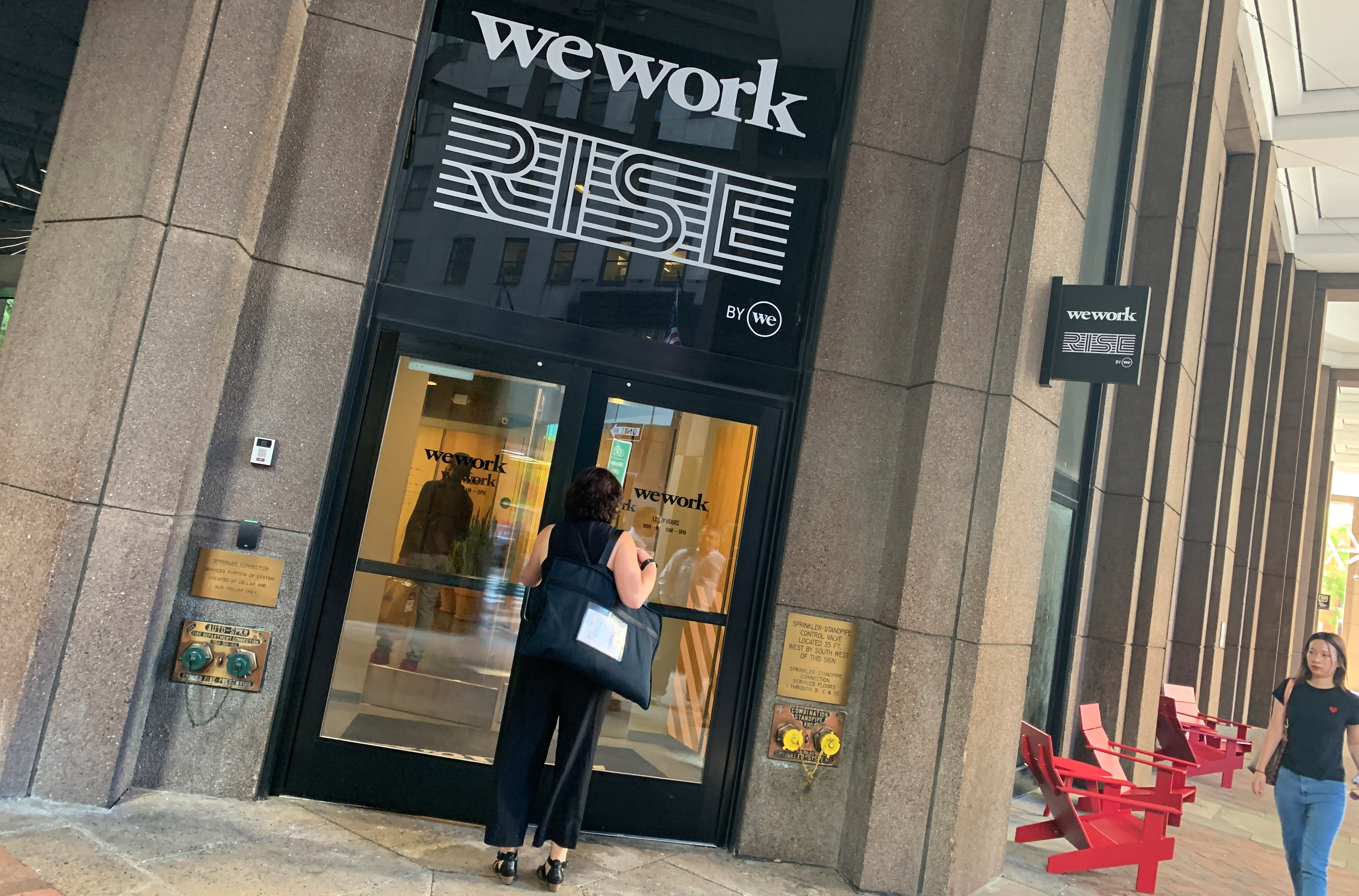
WeWork Rise on Water St. in New York City
Adam Jeffery | CNBC
After pulling its much-hyped IPO late last year and raising emergency funding from SoftBank, WeWork’s leasing activity in the fourth quarter slowed to a crawl.
The company signed only four leases covering 184,022 square feet of space in the last three months of 2019, marking a 93% drop from an average of 2.54 million square feet over the previous four quarters, according to data that real estate firm CBRE shared with CNBC and will release publicly this week.
With such a dramatic slowdown, WeWork ceded the top spot in the flexible office leasing market to Spaces, owned by Regus parent IWG, which increased its new lease footprint by 11% to 284,916 square feet in the period from its four-quarter average, CBRE said.
WeWork’s pullback reflects a downsizing of the business after SoftBank took over 80% control in October with a $5 billion financing package that kept the company afloat. The next month, WeWork announced 2,400 job cuts, or about 19% of its total workforce, as part of an effort to “create a more efficient organization.” The company has divested noncore businesses and shut its WeGrow private school while telling employees that it will focus on serving large businesses rather than small and mid-sized clients.
The industry-wide numbers from CBRE show how much WeWork had come to dominate the co-working space market, fueled by billions of dollars in equity funding from SoftBank.
Newly leased space in the flexible office leasing market plummeted 75% in the fourth quarter to just under 1 million square feet from 3.95 million in the prior period, and WeWork’s share dropped to 18% from 69%. Manhattan was still the largest market, even as new space leased dropped 82% to 187,078 square feet from over 1 million, on average, the prior four quarters. Activity in Chicago fell 89%, while Boston and Los Angeles saw declines of 84% and 75%, respectively.
“We had seen this coming right after the IPO news,” said Julie Whelan, senior director of research at CBRE, in an interview.
Two of WeWork’s projects in the quarter were in Manhattan (one new lease and one expansion), one was in San Francisco and the fourth was in Philadelphia.
Whelan said that demand for flexible work space remains plentiful, particularly as companies question how long this decade-plus of “unprecedented economic expansion” can continue. The flex model allows companies to operate on shorter leases, leaving them with more options in case market conditions change.
Shifting market
But there are ways to structure co-working leases that differ from WeWork’s model of taking control of large buildings, branding them WeWork and renting out everything from individual desks all the way up to spaces for hundreds or thousands of employees.
Whelan said landlords are looking for opportunities to closely partner with office space providers, do it themselves or sign management agreements. Some building owners and flex space operators are using WeWork’s struggles as an opportunity to pause their own expansion and explore their options, she said.
“It took these flexible office operators for landlords to wake up and realize that flexibility is a big part of their portfolio and something that occupants are demanding,” Whelan said. “The ways landlords will be delivering flexibility to the market is shifting.”
Leave a Reply